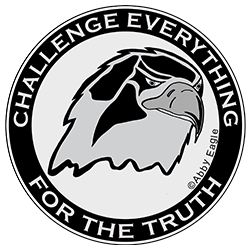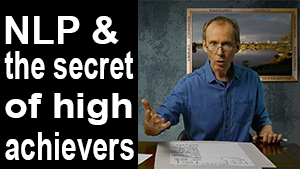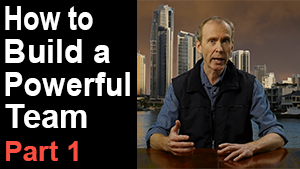
Looking for an online NLP Hypnotherapy Coach to help you achieve your desired outcomes? Phone 07 5562 5718 or send Abby an email to book a free 20 minute telephone or Skype session. NLP, Hypnotherapy and Medtation, Gold Coast, Robina.
Articles in the Reminiscing NLP Series: #1 Meditation, #2 Psychic Skills, #3 Ideomotor Skills. #4 Submodalities, #5
Can Meditation Make You a Better NLP Coach?
Reminiscing NLP #1 By Abby Eagle (2019)
Click the Image to Watch on YouTube
In this series of articles I would like to share with you my exploration of NLP, Hypnotherapy and Meditation. My intention in doing so is for a number of reasons.
The first is to save you time so that you can cut to the chase and extract the powerful tools that NLP, hypnosis and meditation have to offer you. In doing so I hope to empower you.
You see both NLP and hypnosis have got a bad reputation in some circles – and yet they both offer you powerful tools when used properly. In addition the tools and techniques that NLP have to offer have been in use for a long time but it has only been since the conception of NLP that they have now been explicated and made available to everyone.
In addition some people think that hypnosis is a method of control over others and yet it is something that we all use and experience on a daily basis. Hypnosis is also a key element in religion, meditation, spiritual experiences, health and healing. So I would like to help you harness the power of self hypnosis to enrich your life and the lives of those around you.
And then we have meditation. Once again we have an area replete with misconceptions which has been used by some gurus to exploit the masses.
So to begin this story we start back in 1983. That was the year that I burned out after twelve years working as a laboratory technician and photographer. I had also recently got divorced a couple of years earlier. So I was 28 years old. Now I don’t know what you know about the development of the seven subtle bodies but I am sure you have heard of the seven chakras. Each subtle body takes about seven years to develop.
1. The first body is the physical body. It is associated with the development of the conscious mind. In the first 4 years of life the physical body forms and there is a development of the conscious mind.
2. Between 7 and 14 the emotional body forms – also known as the etheric body or unconscious mind. Around 14 years of age the body reaches sexual maturity and there is a new sense of personal identity. You see this in the typical reactive teenage behaviour.
3. Between 14 and 21 the intellect forms – also known as the astral body or collective unconscious mind. The teenager learns how to question reality and think for themselves – hopefully – and then around 18-21 years of age the young adult is given the right to vote.
4. Between 21 and 28 the mental body forms. This is the cosmic unconscious mind. In this stage the young adult learns how to position themselves in the business world.
5. Between 28 and 35 the spiritual body forms.
6. Between 35 and 42 the cosmic body forms.
7. And between 42 and 49 the nirvanic body forms.
If you are interested in the seven subtle bodies and the evolution of consciousness then there is more detail in my meditation book.
If you look at your own life and the lives of others you will see behaviour that matches the development of the seven subtle bodies and the evolution of consciousness. You will find that what was important to you at one stage of your life will be meaningless to you at another stage of your life. This is why it is useful to do regular NLP future selfing exercises and keep track of how your values shift – this is doubly important if you are in a relationship.
So anyway up until my mid twenties my life was way off track. From a teenager I had resorted to drugs and alcohol as a way to deal with my life situation – which really only served to suppress my life energy. So as the mental body – the fourth subtle body - began to mature in my mid to late twenties I became more conscious that my life was off track and there was something that I needed to do – but I was not quite sure what that was. I was enrolled in a psychology degree at university – I was a photographer – I was exploring various forms of art like silk screening. So my life energy propelled me into a search for something. For some reason I wanted to learn how to meditate so I started looking around for a meditation school.
By chance I was at a fashion event in Fremantle looking for some way to sell my silk screened garments - and this guy dressed in orange with a mala around his neck introduces himself to me. We got into a conversation – I mentioned meditation and he told me about Osho’s Dynamic Meditation. So the next day I go down to the Rajneesh Centre in Freo to inquire about their meditations. For some reason I told them that I wanted something heavy duty – so the Ma suggested Dynamic Meditation. The next morning I rode my Ducati motor bike – in the dark – freezing cold – to start Dynamic Meditation at 6.00am. And that in a way was the beginning of the end of my old lifestyle and my old consciousness. It messed with my mind so much that I couldn’t focus on my Psychology studies at University so I ended up dropping out.
For those of you who think that all meditation is about sitting quietly, cross legged with your eyes closed think again. Dynamic Meditation was developed by Osho – the contemporary Zen Mystic in the 1970’s. I’ll give you a quick run down.
Dynamic is an hour long meditation done to music. The first two stages are 10 minutes long and the last three are 15 minutes long. It is done standing with eyes closed. There are five stages. In the first stage you use a chaotic breathing technique to break up the holding patterns in the body. Stage two is catharsis – you shout, scream, cry, beat pillows, dance wildly – you express whatever arose in the first stage.
The next stage - stage three – with hands held above the head you jump gently up and down landing on your heals shouting the Sufi mantra hoo, hoo, hoo, hoo.
When you hear Osho say stop you freeze on the spot and remain absolutely still. This is stage four. One time when I did this I felt like I was going to go crazy or die if I remained standing there – but I remained absolutely still and then my sense of consciousness shifted from around my head to the heart region for about ten seconds and then moved back up to the head. It was amazing.
And this commitment to following your original intention – no matter what happens – is the key to getting into flow and achieving all sorts of outcomes – including spiritual experiences. Remember my mantra – set an intention which drives your attention onto the task at hand so that you can focus in and concentrate – and in doing so you are plunged into the eternal now. Anyway I got a bit off track – the fifth stage of Dynamic Meditation is to dance and celebrate whatever occurred during the meditation. So that is Dynamic Meditation – check it out online.
So my routine was to get up at 5.30am – drive in the freezing cold to Freo – meditate for an hour - come home – have breakfast – shower and then go to bed for an hour. So about a week after starting Dynamic Meditation I get home, eat breakfast, shower, go to bed – and then I found myself leaning against the bedroom wall looking at myself asleep in bed. And then I fell through the wall. This scared the daylights out of me and I entered my body with a jolt and woke up. I was scared – and got out of bed and ran to see my flat mate in the next room.
That was the first of many out of body experiences (OBE) that were to follow. I made notes of some of my spiritual experiences and if you are interested you can read them on my website. If you would like to discuss your spiritual experiences we can do so on the NLP and Hypnotherapy Group on Facebook.
So what I learned from Osho was that meditation is not about sitting quietly in your best yoga posture – meditation is preparation for death - meditation is an inquiry into your interiority – meditation is an enquiry into truth – into consciousness – and as such it requires an intensity and an urgency as-if this is the last moment of your life. So I don’t know if you meditate or not but how many people would describe meditation in those terms. And when you think about it – when Gautama the Buddha saw those things that disturbed him did he talk about it with his friends and family? No, he made a decision to go into the wilderness and find what it is that is beyond death. So he walked out on his wife – who was ready to give birth to his son the very next day – and he headed off into the forest to make an inquiry into consciousness. He acted with a sense of urgency as-if this was the last moment of his life.
Osho used to talk about squeezing the juice from life – about squeezing the juice from each and every moment. So whatever you do – do it consciously – when walking just walk – when eating just eat – when talking with a friend talk to the friend – and when watching a TV show – watch the show and be total in that experience. Whatever you do focus in and be total in that experience. The mantra that you would have heard me use is – set an intention which drives your attention onto the task at hand such that you focus in and concentrate and find yourself plunged into the eternal now.
And even though I did not understand that at the time when I started Dynamic Meditation – that was what I was doing – and I think that it began to loosen up the distinctions between conscious mind and unconscious mind such that now I think more in terms of a consciousness – a conscious awareness that is conscious of thoughts that arise in the mind. And we can talk about this in another article – but what I would like you to understand is that all thoughts arise out of the unconscious mind – and that you can have an awareness of those thoughts.
So when it comes to dealing with habitual behaviours like cigarettes, marijuana, alcohol, gambling, binge eating, etc – and once you understand that thoughts are just thoughts then it frees you to train the unconscious mind to change what thoughts arise in the mind such that you then can directionalise your mind towards more positive behavioural outcomes. Does that make sense? Thoughts are just thoughts – thoughts arise in the mind for one reason or another – if the thoughts do not serve you by creating positive behavioural outcomes then train the unconscious mind to change what thoughts arise in the mind such that you get the behaviour that you desire. NLP, hypnotherapy and meditation give you some powerful tools to do just that – but it requires awareness.
Anyway that is enough for this article and I am really interested to read your comments and if you have not done so you are welcome to join us over at the Facebook Group for a discussion. If you are looking for a NLP Coach then feel free to contact me using the contact form - top right of this page.
Share With Friends
| DISCUSSION GROUPS | |
|---|---|
 |
|
| NLP Future Selfing | |
| NLP, Hypnotherapy & Meditation | |
| NLP Peace Mapping | |
| Facebook Discussion Group | |
| The secret of high achievers |
|---|
 |
| How to build a powerful team |
 |
| Learn the NLP Meta Model |
 |
| How I stopped drinking alcohol. |
 |
| How to coach yourself using NLP. |
 |




